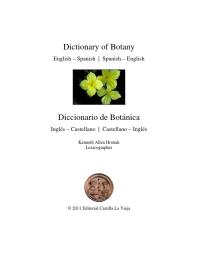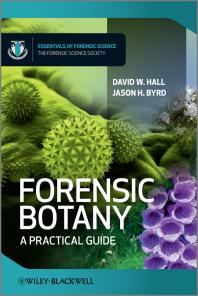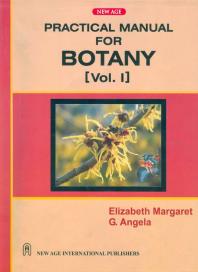
 American Journal of Botany
American Journal of Botany
 Annals of Botany
Annals of Botany
 BMC Plant Biology
BMC Plant Biology
 Botanical Studies
Botanical Studies
 Botany
Botany
 Journal of Integrative Plant Biology
Journal of Integrative Plant Biology
 Dictionary of Botany (English-Spanish Spanish-English)
by
Over 30,000 entries
Covers all aspects of botany:
plant biochemistry, plant species, tree species, plant ecophysiology, paleobotany, plant morphology, plant anatomy, taxonomy and classification, horticulture, arboriculture, plant breeding and genetics, palynology, pteridology, agrostology, orchidology, and much more... Both plant and tree species glossaries are English-Latin-Spanish and Spanish-Latin-English, in accordance with the International Code of Botanical Nomenclature, and broken down by country. Useful bilingual appendices.
Dictionary of Botany (English-Spanish Spanish-English)
by
Over 30,000 entries
Covers all aspects of botany:
plant biochemistry, plant species, tree species, plant ecophysiology, paleobotany, plant morphology, plant anatomy, taxonomy and classification, horticulture, arboriculture, plant breeding and genetics, palynology, pteridology, agrostology, orchidology, and much more... Both plant and tree species glossaries are English-Latin-Spanish and Spanish-Latin-English, in accordance with the International Code of Botanical Nomenclature, and broken down by country. Useful bilingual appendices.
 Forensic Botany
by
Forensic Botany: A Practical Guide is an accessible introduction to the way in which botanical evidence is identified, collected and analysed in criminal cases. Increasingly this form of evidence is becoming more important in forensic investigation and yet there are few trained botanists able to assist in such cases. This book is intended to show how useful simple collection methods and standard plant analysis can be in the course of such investigations and is written in a clear and accessible manner to enhance understanding of the subject for the non-specialist. Clearly structured throughout, this book combines well known collection techniques in a field oriented format that can be used for casework. Collection of evidence differs from formal plant collection in that most professional plant collectors are gathering entire plants or significant portions of a plant for permanent storage and reference. Evidence frequently consists of fragments, sometimes exceedingly tiny. Exemplars (examples of reference plants) are collections of plants made in the manner a botanist would collect them. These collections are necessary to link or exclude evidence to or from a scene. Various methods that allow easy collection, transportation, and preservation of evidence are detailed throughout the book. This book is written for those who have no formal background working with plants. It can be used as a practical guide for students taking forensic science courses, law enforcement training, legal courses, and as a template for plant collection at any scene where plants occur and where rules or laws are involved. Veterinarians, various environmental agencies, anthropologists, and archeologists are examples of disciplines that are more recently in need of plant evidence. Veterinarians are becoming more active in pursuing cases of animals that have been abused or are victims of illegal killing. Anthropologists and archeologists are often called to help with body recovery in outdoor environments. Environmental agencies are increasingly forced to adopt rules for resource protection, are in need of a guide for procedures for plant evidence collection and application. The format of the book is designed to present the reader with all the information needed to conduct a botanical analysis of a crime scene; to highlight the forensic significance of the botanical evidence that may be present; how to collect that evidence in the correct manner and preserve and store that evidence appropriately- also shows how to conduct a laboratory analysis of the plants.
Forensic Botany
by
Forensic Botany: A Practical Guide is an accessible introduction to the way in which botanical evidence is identified, collected and analysed in criminal cases. Increasingly this form of evidence is becoming more important in forensic investigation and yet there are few trained botanists able to assist in such cases. This book is intended to show how useful simple collection methods and standard plant analysis can be in the course of such investigations and is written in a clear and accessible manner to enhance understanding of the subject for the non-specialist. Clearly structured throughout, this book combines well known collection techniques in a field oriented format that can be used for casework. Collection of evidence differs from formal plant collection in that most professional plant collectors are gathering entire plants or significant portions of a plant for permanent storage and reference. Evidence frequently consists of fragments, sometimes exceedingly tiny. Exemplars (examples of reference plants) are collections of plants made in the manner a botanist would collect them. These collections are necessary to link or exclude evidence to or from a scene. Various methods that allow easy collection, transportation, and preservation of evidence are detailed throughout the book. This book is written for those who have no formal background working with plants. It can be used as a practical guide for students taking forensic science courses, law enforcement training, legal courses, and as a template for plant collection at any scene where plants occur and where rules or laws are involved. Veterinarians, various environmental agencies, anthropologists, and archeologists are examples of disciplines that are more recently in need of plant evidence. Veterinarians are becoming more active in pursuing cases of animals that have been abused or are victims of illegal killing. Anthropologists and archeologists are often called to help with body recovery in outdoor environments. Environmental agencies are increasingly forced to adopt rules for resource protection, are in need of a guide for procedures for plant evidence collection and application. The format of the book is designed to present the reader with all the information needed to conduct a botanical analysis of a crime scene; to highlight the forensic significance of the botanical evidence that may be present; how to collect that evidence in the correct manner and preserve and store that evidence appropriately- also shows how to conduct a laboratory analysis of the plants.
 Practical Manual for Botany
by
This textbook ``Practical Manual for Botany`` [Vol. I] has been written in accordance with the revised common core syllabus for the first year undergraduate students. Each topic has been presented in a simple and concise manner with appropriate diagrams. The contents of the book are perfectly fine tuned to the requirements of target segment. It endeavors to meet the vital need of creating in the minds of I year degree students — a genuine interest for the subject and also a healthy appetite for learning. Contents: Algae Fungi Bryophytes Pteridophytes
Practical Manual for Botany
by
This textbook ``Practical Manual for Botany`` [Vol. I] has been written in accordance with the revised common core syllabus for the first year undergraduate students. Each topic has been presented in a simple and concise manner with appropriate diagrams. The contents of the book are perfectly fine tuned to the requirements of target segment. It endeavors to meet the vital need of creating in the minds of I year degree students — a genuine interest for the subject and also a healthy appetite for learning. Contents: Algae Fungi Bryophytes Pteridophytes
 Flora of North America
by
To be published in 14 volumes over the next 12 years, this long-awaited synoptic compendium represents the first and only comprehensive taxonomic guide to the extraordinary diversity of plant life blanketing our continent north of Mexico--including Greenland and the St. Pierre and Miquelonislands. The collaborative effort of more than 30 major U.S. and Canadian botanical institutions, it revises and synthesizes literally thousands of floristic monographs and regional floras published over the last three centuries. But more than that, it distills the original herbarium, laboratory,and field work of hundreds of contributors--all of them leading botanists and taxonomic authorities who have joined forces to develop this century's premier tool for identifying, understanding, and conserving North America's priceless floristic heritage. Concise, easy to use, and beautifully boundand illustrated, Flora of North America is an indispensable working resource for botanists, conservationists, ecologists, agronomists, foresters, range and land managers, horticulturists,--anyone with a serious interest in the distribution, habitat, morphology, and survival of the wide-ranging plantlife around us. Each of its taxonomic volumes brings together the full spectrum of critical botanical data, from basic descriptions to chromosome numbers. The entries also correct erroneous information, qualify misapplied variant names, and note known hybridizations. Findings derived from recentexperimental work and from numerical taxonomy are incorporated, and to assure accuracy, these data have been extensively reviewed and tested by cooperating taxonomic specialists. Volume 1 consists of a series of introductory essays by nearly two dozen noted botanical authorities. Among the topicscovered are the transformation of North American plant life since the end of the Mesozoic era some 70 million years ago; the influence of geographic, climatic, and soil factors; the impact of human cultivation; great naturalists and their contributions to botany and floristics since the age ofColumbus; and approaches to plant classification, with particular attention to the evolutionarily unique pteridophytes and gymnosperms that are covered in Volume 2.
Flora of North America
by
To be published in 14 volumes over the next 12 years, this long-awaited synoptic compendium represents the first and only comprehensive taxonomic guide to the extraordinary diversity of plant life blanketing our continent north of Mexico--including Greenland and the St. Pierre and Miquelonislands. The collaborative effort of more than 30 major U.S. and Canadian botanical institutions, it revises and synthesizes literally thousands of floristic monographs and regional floras published over the last three centuries. But more than that, it distills the original herbarium, laboratory,and field work of hundreds of contributors--all of them leading botanists and taxonomic authorities who have joined forces to develop this century's premier tool for identifying, understanding, and conserving North America's priceless floristic heritage. Concise, easy to use, and beautifully boundand illustrated, Flora of North America is an indispensable working resource for botanists, conservationists, ecologists, agronomists, foresters, range and land managers, horticulturists,--anyone with a serious interest in the distribution, habitat, morphology, and survival of the wide-ranging plantlife around us. Each of its taxonomic volumes brings together the full spectrum of critical botanical data, from basic descriptions to chromosome numbers. The entries also correct erroneous information, qualify misapplied variant names, and note known hybridizations. Findings derived from recentexperimental work and from numerical taxonomy are incorporated, and to assure accuracy, these data have been extensively reviewed and tested by cooperating taxonomic specialists. Volume 1 consists of a series of introductory essays by nearly two dozen noted botanical authorities. Among the topicscovered are the transformation of North American plant life since the end of the Mesozoic era some 70 million years ago; the influence of geographic, climatic, and soil factors; the impact of human cultivation; great naturalists and their contributions to botany and floristics since the age ofColumbus; and approaches to plant classification, with particular attention to the evolutionarily unique pteridophytes and gymnosperms that are covered in Volume 2.
 Trees of Missouri
by
Trees of Missouri contains descriptions and illustrations for 167 trees, information is provided on each tree's habitat, range, physical characteristics, historical medicinal uses, benefits to wildlife, and the origins of their scientific and common names. This book also tells how to care for and propagate native trees and includes lists of trees that have showy flowers, interesting fruit, fall color, and those that provide beneficial food and cover for wildlife. The book also gives advice on controlling exotic trees.
Trees of Missouri
by
Trees of Missouri contains descriptions and illustrations for 167 trees, information is provided on each tree's habitat, range, physical characteristics, historical medicinal uses, benefits to wildlife, and the origins of their scientific and common names. This book also tells how to care for and propagate native trees and includes lists of trees that have showy flowers, interesting fruit, fall color, and those that provide beneficial food and cover for wildlife. The book also gives advice on controlling exotic trees.
This site is maintained by the librarians of George A. Spiva Library.
If you have a question or comment about the Library's LibGuides, please contact the site administrator.